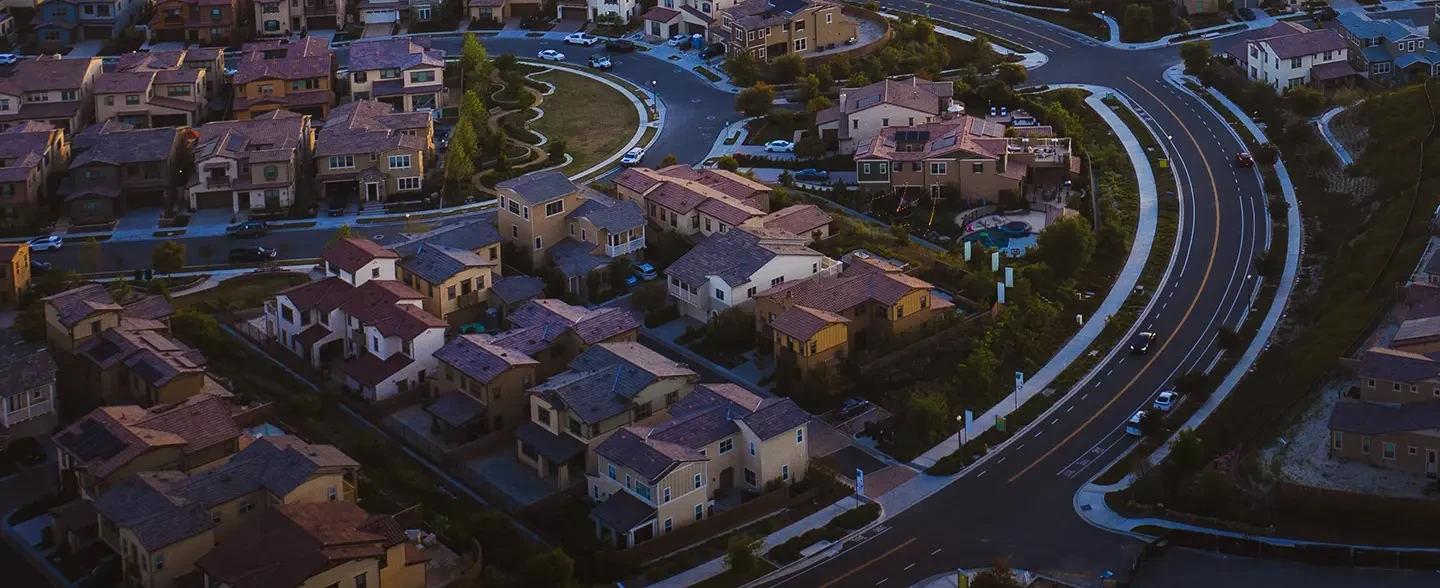Homeowners in California are often unaware of the significant regional differences in HOA regulations that can impact their rights and obligations. While all California HOAs are governed by the same general framework, the Davis-Stirling Act, local rules and enforcement can vary greatly between Northern and Southern California.
Whether you’re dealing with water conservation laws in the north or strict aesthetic guidelines in the south, understanding these regional nuances is essential. At LS Carlson Law, we specialize in helping homeowners navigate these complexities, offering clear, expert guidance to ensure compliance and protect your rights.
Understanding California's HOA Landscape
California is a diverse state with unique regional climates, housing markets, and community needs. As a result, HOA regulations vary between Northern and Southern California. While both regions fall under the umbrella of the Davis-Stirling Act, which provides the primary legal framework for HOAs in the state, local enforcement and specific regulations differ.
For homeowners navigating these variations, it’s important to understand how the state’s laws are applied in both regions and how regional factors can influence HOA rules. From climate-based regulations to voting processes and dispute resolution, homeowners must be aware of the nuances that may impact their community.
Northern California HOA Rules: Impact of Climate and Housing Style
In Northern California, HOA regulations often reflect the region’s specific environmental concerns. This can include rules around landscaping, water usage, and the protection of natural resources. With the state's susceptibility to drought conditions, Northern California HOAs may implement stricter water conservation measures, such as limits on irrigation or specific types of landscaping, including the use of drought-tolerant plants.
Northern California communities are also known for their more relaxed housing styles, often embracing rural or suburban aesthetics. As a result, HOAs in this region may have more flexible rules surrounding property modifications, provided they align with the community's broader standards. However, the larger geographical spread of these communities may sometimes lead to less consistent enforcement, creating potential challenges for homeowners in understanding and navigating the specific regulations that apply to their development.
Southern California HOA Laws: Focus on Property Values and Aesthetic Control
Southern California’s HOA regulations tend to place a greater emphasis on maintaining property values, which directly affects rules around aesthetics and community uniformity. In cities like Los Angeles, San Diego, and Orange County, HOAs often enforce strict guidelines on home exteriors, landscaping, and architectural changes. This is due to the region’s competitive real estate market, where maintaining curb appeal is critical for preserving property values.
Southern California also faces unique challenges related to climate, such as the risk of wildfires. HOAs in fire-prone areas may have additional regulations regarding fire-resistant landscaping, building materials, and emergency evacuation plans. For example, rules around firebreaks, proper clearance around structures, and the types of plants allowed in yards may be more stringent than in Northern California.
Moreover, Southern California HOAs are often stricter when it comes to governing documents and enforcement. This may include clearer, more defined processes for voting, elections, and dispute resolutions. Homeowners in this region should familiarize themselves with HOA rules about voting power, quorum requirements, and the procedures for challenging assessments or board decisions.
Regional Variations in HOA Compliance and Enforcement
One of the most significant differences between Northern and Southern California HOA rules is how enforcement takes place. While both regions must comply with the Davis-Stirling Act, local jurisdictions may differ in their approach to enforcement, dispute resolution, and legal action.
For example, in Southern California, where communities tend to be denser and more affluent, there may be more resources dedicated to enforcing HOA rules and resolving conflicts. This can make the enforcement process faster and more consistent. On the other hand, Northern California communities, particularly in rural or suburban areas, may rely more heavily on self-governance, with less oversight and fewer resources dedicated to enforcement. As a result, homeowners in Northern California may find that legal options for dispute resolution can be more limited or difficult to navigate.
Practical Steps for Homeowners: Ensuring Compliance
Regardless of whether you live in Northern or Southern California, understanding your HOA’s governing documents, such as Covenants, Conditions, and Restrictions (CC&Rs), is essential for staying in compliance with your community’s regulations. Homeowners should regularly review HOA board meeting minutes, election services, and special assessments to stay informed about any changes or updates to the rules.
Additionally, homeowners must understand the voting process for HOA elections. Whether using secret ballots or electronic voting, homeowners should know their rights regarding membership votes, quorum requirements, and candidate qualifications. In some cases, homeowners may want to engage in legal action if they feel the HOA has not followed the appropriate election process or violated their legal rights.
Common Legal Issues Faced by Homeowners
Some common legal issues homeowners face in both Northern and Southern California include:
Special Assessments and Increases: Homeowners may face unexpected increases in HOA fees or assessments. It’s important to know your rights under the Civil Code, especially when these assessments exceed specific limits or are not properly voted on.
Dispute Resolution: Whether it’s a matter of property modifications, noise complaints, or shared space usage, understanding the dispute resolution process is key. Homeowners should know whether mediation or arbitration is required or if they can pursue legal action through California’s court system.
Noncompliance with Governing Documents: Many disputes arise when homeowners or HOA boards fail to comply with the community’s governing documents. Understanding the enforcement mechanisms for your HOA rules is critical to resolving such issues.
If you ever find yourself facing a dispute or question about HOA regulations, seeking professional legal advice can help clarify your options. At LS Carlson Law, we specialize in guiding homeowners through the complexities of HOA compliance, from the Davis-Stirling Act to local HOA variations. Our team is committed to providing clear, practical advice and support for homeowners across California.
Empower Yourself with Expert Legal Support for HOA Matters
Whether you live in Northern or Southern California, understanding regional HOA regulations is vital to protecting your rights and property. If you need assistance navigating HOA rules, disputes, or legal compliance, LS Carlson Law is here to help. Our team of experienced attorneys is ready to provide you with the legal support you need. Contact us today to learn more about how we can assist you.

Tell Us About Your HOA Dispute
When you hire LS Carlson Law, you can be assured you’ll be getting an aggressive firm fully dedicated to achieving your legal objectives. Don’t take our word for it, we encourage you to take a look at the numerous five-star client reviews. Call us now or fill out the form to set an appointment.



